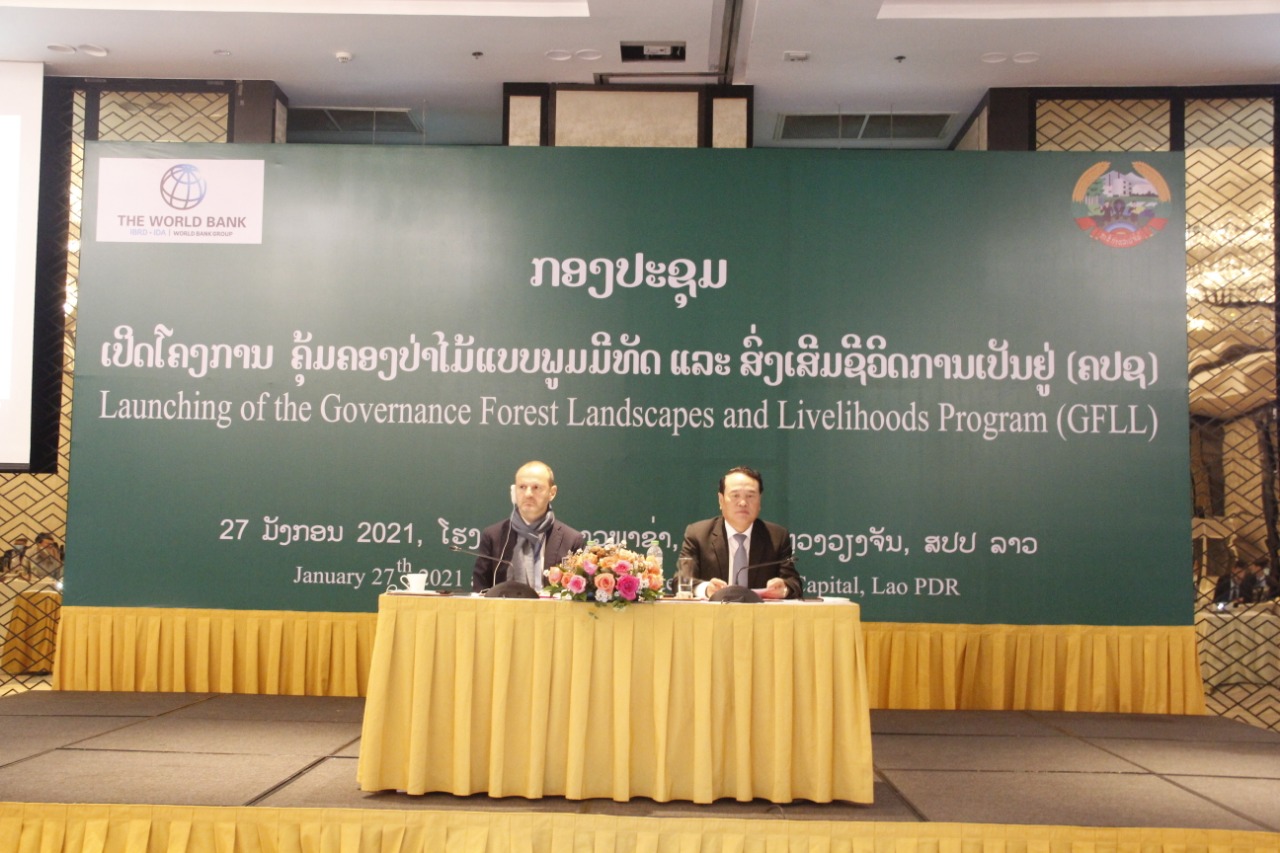Monthly Archives: February 2021
1st Summary of Information on How Safeguards for REDD+ were addressed and respected by Lao People’s Democratic Republic for the period 2015-2018
This 1st Summary of Information on How Safeguards for REDD+ were addressed and respected in Lao People’s Democratic Republic (1st SOI of Lao PDR) has been prepared and submitted in line with Decision 17/CP.21 of the UNFCCC, the paragraph 4, and covers the period of 4 years from 2015 to 2018 to receive the results-based payment from the Green Climate Fund (GCF). In accordance with Decision 17/CP. 21 of the UNFCCC, 1st SOI of Lao PDR presents the national circumstances, description of each safeguard including how addressed and respected in the Lao PDR context, relevant systems and processes including the safeguard information system, and other information relevant to the safeguards. 1st SOI of Lao PDR also spells out the gaps and challenges for fully “addressing and respecting” Cancun Safeguards and these gaps and challenges will be filled or overcome in a step-wise approach with resources both available within the country and provided from international community including the results-based-payment from GCF. In addition, the improvements made in 2019, which is beyond the payment period, are also stated as a reference for transparency and development of 2nd SOI of Lao PDR. 1st SOI of Lao PDR has been developed in both Lao and English simultaneously under the guidance of the Safeguards Technical Working Group (SG TWG) and through the consultations at various levels in the country, comments from relevant stakeholders on its drafts, and a group of experts both national and international. The development process of 1st SOI of Lao PDR didn’t start from scratch but relies heavily on existing REDD+ related safeguards systems/frameworks at sub-national or project levels, some of which were also developed under the guidance of SG TWG and through stakeholder consultations. Therefore, it could be said that even though this is the 1st SOI of Lao PDR, Lao PDR has rich experiences in dealing with REDD+ safeguards and has been implementing them at various levels except national level.
(ENG) Full SOI Lao PDR submission
Local communities, including minority groups, to benefit from US$42 million agreement

VIENTIANE, January 27, 2021 – The Lao PDR and the World Bank’s Forest Carbon Partnership Facility (FCPF) have signed an agreement to provide up to $42 million between now and 2025 to support the country’s efforts to reduce emissions from deforestation and forest degradation (REDD+). A ceremony today marked the launch of this forest- and climate-focused program.
Under this Emission Reductions Payment Agreement (ERPA), the World Bank commits to making payments to the Lao PDR for verified reductions of up to 8.4 million tonnes of carbon dioxide emissions in northern Laos. The program aims to address the drivers and underlying causes of forest loss in six provinces (Houaphanh, Luang Prabang, Oudomxay, Luang Namtha, Bokeo, Xayabouly), encompassing a third of national territory. The region has been responsible for 40 percent of nationwide deforestation and forest degradation between 2005–15.

“We are committed to improving land use, strengthening forest protection, and enhancing forest restoration in line with the 2019 Forestry Law, the 9th National Socio-Economic Development Plan for 2021-2025, and the National Green Growth Strategy to 2030,” said Thongpath Vongmany, Vice Minister for Agriculture and Forestry. “This is an opportunity to drive economic growth and resilience with more sustainable rural land use based on participatory and integrated planning.”
The geography of northern Laos is distinct, with over 20 ethnic groups calling this mountainous region their home. Limited accessibility and infrastructure in these remote areas play a role in preserving cultural heritage, but also pose challenges for job opportunities, transportation, access to social services, and the promotion of industry and trade.
Working across sectors, the Lao emissions reduction program, entitled “Promoting REDD+ through Governance, Forest Landscapes and Livelihoods — Northern Laos”, supports better forest and land governance, land-use planning, livelihoods development, and sustainable ecosystem management to reduce pressure on forests. It also includes a benefit-sharing arrangement that will encourage communities and other stakeholders to participate.
“This innovative financing is part of World Bank support that helps the Lao PDR manage its landscapes for greener and more resilient economic growth and recovery,” said Nicola Pontara, World Bank Country Manager for Lao PDR. “This results-based funding will reduce emissions while benefiting people who depend on sustainable forests for their livelihoods.”
Lao PDR is the third country in Asia, after Indonesia and Vietnam, and the ninth country worldwide to sign an ERPA with the World Bank’s FCPF. The total value of these nine agreements, which have also been made with Chile, Costa Rica, Côte d’Ivoire, the Democratic Republic of Congo, Ghana and Mozambique, is nearly half a billion US dollars. Several other countries are expected to finalize their emission reductions programs and follow suit with ERPA signings early this year.
The Forest Carbon Partnership Facility is a global partnership of governments, businesses, civil society, and indigenous peoples’ organizations focused on reducing emissions from deforestation and forest degradation, forest carbon stock conservation, sustainable management of forests, and the enhancement of forest carbon stocks in developing countries — activities commonly referred to as REDD+. Launched in 2008, the FCPF has worked with 47 developing countries across Africa, Asia, and Latin America and the Caribbean, along with 17 donors who have made contributions and commitments totaling $1.3 billion.
Source: https://www.worldbank.org/en/news/press-release/2021/01/27/lao-pdr-signs-agreement-to-protect-forests-and-reduce-carbon-emissions